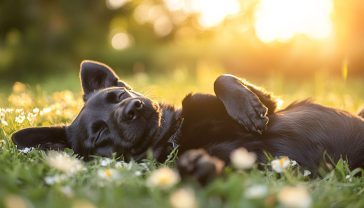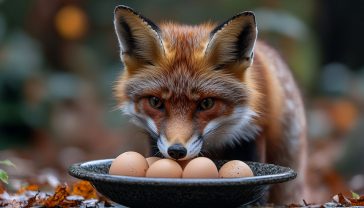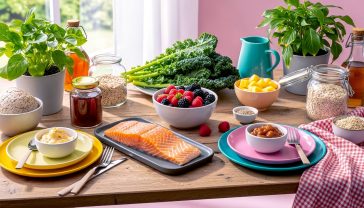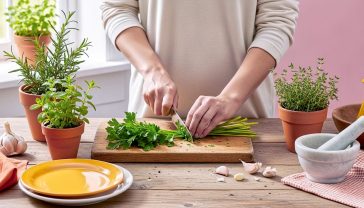Bird Cage Food and Water Dishes: Keeping Your Feathered Friend Happy and Healthy
Discover why the right food and water bowls are crucial for your bird’s health and happiness. Our complete guide covers the best materials, types, and more.

This post may contain affiliate links. If you make a purchase through these links, we may earn a commission at no additional cost to you.
Picture your bird’s cage. It’s their castle, their playground, and their dining room all rolled into one. In the corner, there’s a little dish of colourful seeds and a bowl of fresh, clean water. They seem like such simple things, don’t they? Just basic bits of kit. But what if I told you that these humble dishes are one of the most important choices you’ll make for your feathered friend’s happiness and health?
Here in Britain, we’re a nation of animal lovers. We want the best for our pets, from the fluffiest hamster to the chattiest parrot. Choosing the right food and water dishes isn’t just about ticking a box on a shopping list; it’s a fundamental act of care. It affects your bird’s health, their mood, and even how much cleaning you have to do.
So, let’s pull up a perch and dive deep into the surprisingly fascinating world of bird cage food and water dishes. By the end of this guide, you’ll be an expert, ready to create the perfect dining experience for your bird, ensuring they’re not just fed, but truly thriving.
Why Get in a Flap About Food Bowls?
It’s easy to think, “It’s just a bowl, what’s the big deal?” But for a bird, their food and water dishes are central to their daily life. Getting them right can prevent a whole host of problems and make for a much happier pet.
Health and Hygiene: A Bird’s First Line of Defence
Imagine eating your dinner off the same unwashed plate for a week. You’d feel pretty ill, wouldn’t you? Birds are incredibly sensitive to bacteria. A poor-quality dish can be a breeding ground for nasty germs that cause serious illness.
- Scratches and Pores: Cheap plastic bowls get scratched easily. Each tiny scratch is like a little trench where bacteria can hide from a quick wipe-down, multiplying and waiting to infect your bird. Porous materials like some ceramics can do the same.
- Beak and Foot Health: The wrong size or shape of dish can even cause physical problems. A dish that’s too deep might force a bird into an awkward position to eat, while a rough edge could damage their beak over time.
Behaviour and Enrichment: A Happy Bird is a Busy Bird
In the wild, birds don’t just find a bowl of food waiting for them. They spend most of their day foraging – searching, working, and problem-solving to find their next meal. A boring old bowl doesn’t offer any of that mental stimulation.
Choosing feeders that make your bird work a little for their food can be a game-changer. It channels their natural instincts, preventing boredom and reducing stress-related behaviours like feather plucking or screaming. A bird that’s busy figuring out how to get a seed out of a puzzle toy is a happy and fulfilled bird.
Convenience and Safety: Making Your Life Easier
Let’s be honest, cleaning the bird cage isn’t the most glamorous job. The right dishes can make your life much easier. Some are a doddle to unclip and pop in the dishwasher, while others are fiddly and a nightmare to scrub.
Safety is also key. A flimsy bowl can be tipped over, spilling water and seeds everywhere and creating a huge mess. In the worst-case scenario, a poorly designed dish could even trap a bird’s claw or head. It pays to choose wisely.
A Quick Flutter Through History: Bird Keeping in Britain
Our love for keeping birds indoors has a long history. Back in Victorian times, wealthy families showed off their status with grand, ornate aviaries filled with exotic birds. Canaries became hugely popular, their cheerful song a welcome sound in homes across the country. They were even used by coal miners as an early warning system for dangerous gases.
Later, the budgerigar, or budgie, arrived from Australia and quickly became one of Britain’s best-loved pets. But in those early days, our understanding of what birds needed was limited. Cages were often small and bare, and a simple pot for seed and water was considered enough. Thankfully, we now know so much more about avian welfare, and providing a healthy, stimulating environment – including the right dining setup – is seen as essential.
A Field Guide to Feeder Types: Which One is Right for Your Bird?
Walking into a pet shop or browsing online can be overwhelming. There are so many different types of feeders and waterers. Let’s break them down into the main categories.
Open Dishes and Crocks: The Traditional Choice
These are the simple, open-topped bowls that clip to the side of the cage or sit on the floor. They’re what most people picture when they think of a bird bowl.
- Pros: They’re simple, cheap, and give birds easy access to their food and water. They are also very easy to clean thoroughly.
- Cons: Because they’re open, they are very easily contaminated with droppings, feathers, and dust. They also do nothing to stop a bird who loves to fling its food around the room!
- Best for: Just about any bird, as long as you are very careful about where you place them and commit to cleaning them every single day without fail.
Hooded and Covered Dishes: For the Messy Eater
These are clever bowls with a plastic hood or cover over the top, creating a little booth for the bird to eat in.
- Pros: They are brilliant at containing mess. The hood stops seeds from being scattered all over your floor and helps keep droppings and other debris out of the food.
- Cons: The cover can make them slightly trickier to clean inside. Some nervous or timid birds might also be scared to stick their head inside at first.
- Best for: Small to medium-sized birds known for being messy, like finches, canaries, and budgies. They are a lifesaver for owners tired of constantly vacuuming.
Gravity Feeders and Hoppers: The “Fill It and Forget It” Myth
These are the tall, clear tubes that you fill with seed, which then trickles down into a small trough at the bottom as the bird eats.
- Pros: They hold a lot of food, so you don’t have to refill them as often. This can seem convenient.
- Cons: This is a big one: they encourage selective feeding. Many seed mixes contain a variety of seeds, some healthier than others. Birds will often pick out their fatty, sugary favourites (like sunflower seeds) and leave the healthy stuff. With a hopper, the husks of the eaten seeds can pile up on top, tricking you into thinking it’s full when actually, all the good food is gone. They are also notoriously difficult to clean properly.
- Best for: Honestly, these are best avoided for daily use. They might be okay for providing grit or a specific supplement, but for your bird’s main diet, a simple bowl that you fill with a measured daily portion is much healthier.
Water Bottles and Silos: A Cleaner Sip?
These work just like hamster bottles, with a metal spout and a little ball bearing at the end. The bird pecks at the ball to release a drop of water.
- Pros: They keep the water exceptionally clean, free from food, droppings, and other gunk.
- Cons: Not all birds take to them naturally; you have to train them and make sure they’re drinking. More dangerously, the mechanism can fail or get blocked by a bit of food, leaving your bird without any water.
- Best for: Owners who are extremely vigilant. You must check the bottle multiple times a day to ensure it’s working. It’s always wise to provide an open bowl of water as well, just in case.
Foraging Feeders and Treat Holders: Food as Fun
These aren’t for your bird’s main meal but are fantastic for providing treats, vegetables, and mental stimulation.
- What they are: This category includes everything from simple fruit skewers that you can clip to the cage bars to complex puzzle toys that a bird has to twist, pull, or slide to get a treat.
- Why they’re great: They turn eating into a fun and engaging activity that mimics their natural behaviour. This is a powerful tool against boredom and is essential for intelligent birds like parrots.
The Great Material Debate: Stainless Steel, Ceramic, or Plastic?
The material a dish is made from is just as important as its type. It affects cleanliness, durability, and safety.
| Material | Pros | Cons | The Verdict |
|---|---|---|---|
| Stainless Steel | Non-porous, incredibly durable, easy to clean, dishwasher-safe. | Can be more expensive initially, plain appearance. | The Gold Standard. Vets and experts agree this is the safest and most hygienic choice. |
| Ceramic | Heavy (hard to tip), easy to clean (if glazed), stylish designs. | Can crack or chip (hiding germs), must be lead-free. | A Good, Stylish Option. Check for chips regularly and only buy from reputable brands. |
| Plastic | Cheap, lightweight, comes in many colours and designs. | Scratches easily (traps bacteria), can be chewed, may contain harmful chemicals. | Use With Caution. A budget-friendly choice, but needs replacing the second it gets scratched. |
Stainless Steel: The Vet’s Top Pick
Think of a stainless steel bird bowl like your trusty kitchen sink or a surgeon’s tools. It’s tough, it’s non-porous (meaning there are no tiny holes for germs to hide in), and it’s incredibly easy to get squeaky clean. You can scrub it, put it through a boiling hot dishwasher cycle, and it will come out perfect every time. While it might cost a little more upfront, a good set of stainless steel bowls will last a lifetime, making them a wise investment in your bird’s health.
Ceramic: Heavy and Handsome
A good quality ceramic bowl is like a sturdy coffee mug. It’s heavy, which is great because your bird won’t be able to tip it over and make a mess. They often come in attractive colours and patterns, allowing you to add a bit of style to the cage. The key things to look for are a smooth, unbroken glaze and a guarantee that it’s lead-free, as lead is highly toxic to birds. The main downside is that if you drop it, it can crack or chip. A damaged ceramic bowl must be thrown away immediately, as the crack can harbour bacteria and the sharp edge could injure your bird.
Plastic: Cheap, Cheerful, and a Bit Risky
Plastic is the most common and cheapest option you’ll find. It’s lightweight and comes in every colour under the sun. However, it comes with risks. The surface of plastic is soft and gets scratched very easily by a bird’s beak and claws. As we’ve learned, these scratches are a paradise for germs. Furthermore, some plastics can contain a chemical called BPA, which can be harmful. If you must use plastic, choose one that is advertised as BPA-free and be prepared to throw it out and replace it as soon as you see any signs of wear and tear.
What to Avoid at All Costs
Never, ever use dishes made from galvanised metal. This is metal that has been coated in zinc to prevent rust. That zinc coating is poisonous to birds and can flake off into their food or water, leading to heavy metal toxicity, a slow and horrible illness. Stick to stainless steel for a safe metal option.
Getting the Size and Shape Spot On
A tiny finch and a giant macaw obviously have very different needs.
- Size: The bowl should be big enough to hold a single day’s portion of food, but not so big that your bird can climb in and soil it. For water, it should be large enough for a good drink but not so deep that a small bird could risk drowning.
- Shape: A wider, shallower bowl is often better than a deep, narrow one. It provides easier access and prevents food from getting stuck in the bottom corners. For water, a shallower bowl also discourages birds from trying to have a full-on bath in it.
Location, Location, Location: Strategic Dish Placement
Where you put the dishes inside the cage is just as important as what they’re made of. A few simple rules can prevent a world of mess and health problems.
Rule #1: Avoid the Splash Zone
Birds poop a lot, and they aren’t fussy about where they do it. The number one rule of dish placement is: never place food or water bowls directly under a perch. It sounds like common sense, but it’s the most common mistake new bird owners make. A quick look at the cage layout can save you from having to constantly clean soiled food and water.
Rule #2: Separate Food and Water
Keep the food dish and the water dish in different parts of the cage, not right next to each other. Birds are messy eaters and will drop bits of food everywhere. If the water is too close, it will quickly turn into a disgusting “bird soup,” full of soggy pellets and seeds, which is a perfect recipe for bacterial growth.
Rule #3: Think About Height
Most pet birds, especially parrots, feel safer when they are high up. Placing their food and water bowls higher up in the cage, near a favourite perch (but not under it!), will make them feel more comfortable. The exception is for birds that are natural ground-feeders, like quails, who will prefer their dishes on the cage floor.
Rule #4: More is More
Consider having more than one food and water station, especially in a large flight cage or if you have more than one bird. This prevents squabbles and ensures that a more timid bird doesn’t get bullied away from the only source of food. Having a backup water source is also a great safety net in case one gets spilled or soiled.
The Daily Scrub: A Simple Guide to Perfect Hygiene
You wouldn’t want to eat from a dirty plate, and neither does your bird. A strict cleaning routine is non-negotiable.
Your Daily Checklist
This needs to be done every single day.
- Empty: Throw away any leftover food and water.
- Wash: Scrub the dishes thoroughly with hot water and a bit of washing-up liquid. Use a dedicated brush or sponge that you don’t use for anything else.
- Rinse: This is a crucial step. Rinse the dishes extremely well under running water to remove every last trace of soap.
- Dry: Dry them completely before refilling. A damp dish can encourage mould.
The Weekly Deep Clean
Once a week, your dishes need to be disinfected. After washing them as normal, you can:
- Use a bird-safe disinfectant: Products like F10 are specially designed for this and are available from pet shops or your vet. Follow the instructions on the bottle carefully.
- Use a vinegar solution: A solution of one part white vinegar to one part water is a safe and effective disinfectant. Soak the bowls for 10-15 minutes, then rinse them thoroughly.
Can You Use the Dishwasher?
Yes! If you have stainless steel or ceramic dishes, the dishwasher is your best friend. A hot cycle will do a fantastic job of washing and disinfecting them. Just make sure they are placed securely so they don’t get thrown around. Plastic dishes may warp in the heat, so it’s best to wash those by hand.
Bird Behaviour Bafflers: Solving Common Food-Related Problems
Sometimes, our birds’ habits can leave us scratching our heads. Here are some common problems and how to solve them.
“My bird throws its food everywhere!”
This is one of the most common complaints from bird owners. A bird flinging seeds across the room isn’t trying to be naughty; there’s usually a reason.
- Why they do it: It can be a natural foraging instinct (digging to find the best bits), a sign of boredom, or simply that they don’t like the food you’re giving them.
- Solutions:
- Feed less: Only put enough food in the bowl for one day. If there isn’t a mountain of seeds to dig through, they are less likely to excavate.
- Use a hooded feeder: This will contain most of the mess.
- Introduce foraging toys: Make mealtime more interesting! Hide food in toys to channel that digging instinct into a fun activity.
“My bird keeps pooping in its water!”
This is a hygiene nightmare. Luckily, the fix is usually simple.
- Solutions:
- Relocate the dish: The bowl is almost certainly under a favourite perch. Move it to a different part of the cage.
- Use a hooded dish or a water bottle: These make it much harder for droppings to land in the water.
“My bird uses its water bowl as a bathtub!”
While it can be cute to watch, a bird bathing in their drinking water quickly makes it dirty and unhygienic.
- Solutions:
- Provide a proper bath: Most birds love to bathe. Offer a separate, shallow dish of water for a few hours each day specifically for bathing. They’ll soon learn the difference.
- Use a narrower water dish: Choose a water bowl that’s big enough for a drink, but not quite big enough for a full-body splash.
The Future of Bird Feeding: What’s Next?
The world of pet care is always evolving. We’re seeing a move towards more natural and enriching feeding solutions. The focus is shifting from simply containing food to making feeding an integral part of a bird’s daily enrichment. We might see more complex puzzle feeders becoming standard, and perhaps even ‘smart’ dishes that can monitor how much a bird is eating. What won’t change, however, are the basics: a safe material, a smart location, and a spotless clean.
Conclusion: A Small Choice, A Big Impact
It turns out there’s a lot more to a simple food bowl than meets the eye. From the hygiene of stainless steel to the enrichment of a foraging toy, the choices you make have a direct impact on your bird’s quality of life.
Remember the key takeaways:
- Hygiene is everything: Clean dishes daily and disinfect weekly.
- Material matters: Choose stainless steel for the ultimate in safety and cleanliness.
- Placement is paramount: Keep dishes away from perches and separate food from water.
By putting a little thought into these small details, you’re doing something huge for your pet. You’re not just providing food; you’re providing care, stimulation, and a safe, healthy environment. And that’s what being a great bird owner is all about.
Further Reading
For more information on bird care from trusted British sources, please visit:
- RSPCA: Guide to looking after your pet birds from one of the most respected organisations in the world.
- The Parrot Society UK: A fantastic resource for anyone who owns a parrot, with detailed care sheets and advice.
- Northern Parrots: One of the UK’s leading suppliers of bird food, toys, and accessories, with a helpful blog section.






